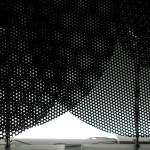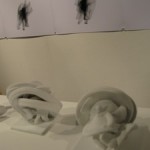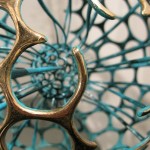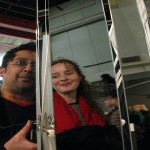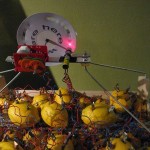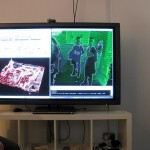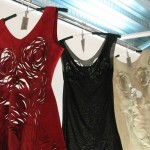sumit: Meanwhile, Pepys Road SE14 gets into the Telegraph, courtesy of J Lanchester > http://t.co/1ODQ93nV
Asides
sumitsays: "i’m training to dance the London Marathon" – alas, his moves were too fly for my phonecam http://ow.ly/i/8iBY
sumitsays: beginning, middle, end. rewind, remix, repeat. #sixwordstories
sumitsays: beginning, middle, end. rewind, remix, repeat. #sixwordstories
sumitsays: "parents shut their children in an oven, to prevent them playing with Jesus" #strictbutfair @britishmuseum
sumitsays: “parents shut their children in an oven, to prevent them playing with Jesus” #strictbutfair @britishmuseum
sumitsays: soapy rain, yellow buckets in the sky
sumitsays: soapy rain, yellow buckets in the sky
sumitsays: young visitor has just invented the game of hide ‘n’ sleep. sounds like an excellent diversion for a rainy sunday afternoon
sumitsays: young visitor has just invented the game of hide ‘n’ sleep. sounds like an excellent diversion for a rainy sunday afternoon
sumitsays: unicorns rampant on a field of white @printclublondon
sumitsays: shinpads & heels: that elegant hint of cyborg athleticism
sumitsays: shinpads & heels: that elegant hint of cyborg athleticism
sumitsays: At Birling Gap
sumitsays: At Birling Gap.
Proper pictures here.
sumitsays: RT @symroe: Playing Big Society Cluedo. It’s easier than normal Cluedo because there isn’t a library.
sumitsays: RT @symroe: Playing Big Society Cluedo. It’s easier than normal Cluedo because there isn’t a library.
sumitsays: This year’s #KineticaArtFair: more novelty automatons, fewer strange attractors
sumitsays: This year’s #KineticaArtFair: more novelty automatons, fewer strange attractors
I thought this year’s Kinetica Art Fair was a bit disappointing. Last year’s included a fair proportion of exhibits whose workings were mysterious and unpredictable – in other words, chaotic, in the mathematical sense. This year it all seemed a bit more… obvious. I’m not sure if that’s a fair reflection of the show, or just contempt bred by familiarity.
Here’s a little video I made in about two minutes showing some bits and pieces around the fair.
kinetica art fair 2011 from Sumit on Vimeo.
Black Swan: ballet + body horror
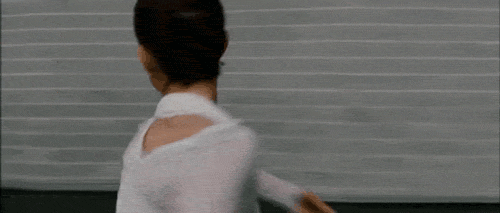
@sumitsays: Black Swan. If ballet + body horror = inspired, I’m looking forward to flamenco + splatter
I’ve mostly seen Black Swan described as a psychological thriller – a term that I’ve always understood to mean that the protagonist has to use their ingenuity and wits, rather than physical strength, to escape a situation, the threat of violence being more present than violence itself. (Wait Until Dark would be my canonical example.) Black Swan, however, is about a young woman’s descent into dysmorphic insanity. Almost every scene in this film is disturbing in a visceral sense (including those that reveal the phenomenal physical stresses associated with ballet): bodies are flexed, broken, torn up, destroyed and finally reshaped into unsettling new forms. So I’d say it owes more to “body horror” than “psychological thriller”.
Pigeon-holing aside, is it any good? Well, I enjoyed it, though it did lay it on pretty thick. Films that give the audience very few clues about what to believe run the risk of losing their emotional investment, and it would seem that’s the case for some of Black Swan‘s viewers. I found it easy enough to pin myself to the fate of Natalie Portman’s tormented prima ballerina; whether what’s she’s experiencing is “real” or not in some objective sense didn’t matter much to me. I enjoyed the structure, too, with the character’s arc mirroring that of the ballet she’s performing in; Aronofsky mashes it up enough that the ending is satisfyingly resonant rather than hokily obvious. (A personal irritation: Black Swan bears some striking similarities with a novel I plotted but never got round to writing about five years ago. Oh well.)
Incidentally, I’m not kidding about the flamenco-splatter movie. Someone do it. All those scarlet frills…
sumitsays: Side by side in my inbox: beatboxing whiz @shlomo ; Shlomo Sands, scrutineer of national mythmaking #theinternetmakesstrangebedfellows
sumitsays: Side by side in my inbox: beatboxing whiz @shlomo ; Shlomo Sands, scrutineer of national mythmaking #theinternetmakesstrangebedfellows
sumitsays: First read this hed as an exposé, not a plea. Seemed pretty hardcore http://plixi.com/p/73849588
sumitsays: First read this hed as an exposé, not a plea. Seemed pretty hardcore http://plixi.com/p/73849588
sumitsays: Can’t believe #meateasy is my late-night desperation food option. #NXG
sumitsays: Can’t believe #meateasy is my late-night desperation food option. #NXG
sumitsays: RT @anothersam Mystery of grand piano on a narrow sand bar in Biscayne Bay http://goo.gl/kYQwh
sumitsays: RT @anothersam Mystery of grand piano on a narrow sand bar in Biscayne Bay http://goo.gl/kYQwh
sumitsays: @pipsan may I also commend to you the archaic form, "jollihed"
sumitsays: @pipsan may I also commend to you the archaic form, “jollihed”
sumitsays: My Top 3 Weekly #lastfm artists: Clint Mansell (68), Alva Noto (19) & Terror Danjah (18) http://bit.ly/9YoOfe
sumitsays: My Top 3 Weekly #lastfm artists:
Clint Mansell (68) Black Swan, yes, but also Sahara
Alva Noto (19, via)
Terror Danjah (18, particularly this and this)
http://bit.ly/9YoOfe
Tweekly.fm isn’t actually working very well for me, because I mostly listen to individual tracks. So all it takes is for me to listen to an album a couple of times (or a couple of albums by the same artist) for the artist to make the top three, even if they weren’t my discovery of the week. Even more so if one of the albums – Sahara – is a soundtrack made up of 28 short tracks. May have to rethink…
sumitsays: succession of brief, repetitive dreams in which Dracula came to sate his bloodlust but was pacified with videogames & tea #wtfsubconscious
sumitsays: succession of brief, repetitive dreams in which Dracula came to sate his bloodlust but was pacified with videogames & tea #wtfsubconscious
sumitsays: New X Gate http://yfrog.com/h25viwgj #nxg
sumitsays: RT @annecupcake: Dear @standardnews – Goldsmiths aka #meateasy is in NEW CROSS not Deptford. Or do you only associate NC with bad stuff …
sumitsays: RT @annecupcake: Dear @standardnews – Goldsmiths aka #meateasy is in NEW CROSS not Deptford. Or do you only associate NC with bad stuff …
sumitsays: If I can’t dance, I don’t want to be part of your revolution @yesnicktaylor on last Friday’s Dance Against the Deficit http://bit.ly/gDbsjI
sumitsays: If I can’t dance, I don’t want to be part of your revolution @yesnicktaylor on last Friday’s Dance Against the Deficit http://bit.ly/gDbsjI
sumitsays: Am deep in research mode. Let Astrocat entertain you in my absence http://bit.ly/g8vWlL
sumitsays: Am deep in research mode. Let Astrocat entertain you in my absence http://bit.ly/g8vWlL
sumitsays: My Top 3 Weekly #lastfm artists: Luke Abbott (30), Clint Mansell (19) & King Britt (15) http://bit.ly/9YoOfe
sumitsays: My Top 3 Weekly #lastfm artists:
Luke Abbott (30)
Clint Mansell (19 – yes, still Black Swan)
King Britt (15 – and still Sister Gertrude Morgan)
http://bit.ly/9YoOfe
sumitsays: saintly Moira Stewart untouched on perma-adbusted NXG poster. respect
sumitsays: saintly Moira Stewart untouched on perma-adbusted NXG poster. respect
sumitsays: My Top 3 Weekly #lastfm artists: King Britt (46), Clint Mansell (32) & Michael Giacchino (29) http://bit.ly/9YoOfe
@sumitsays: My Top 3 Weekly #lastfm artists: King Britt (46), Clint Mansell (32) & Michael Giacchino (29) http://bit.ly/9YoOfe
King Britt (via, also)
the well-tempered icicle: frozen minimalism and joik bass
@sumitsays: the well-tempered icicle: frozen minimalism and joik bass @somersethouse
So on Sunday I went to see Norwegian musician Terje Isungset playing one of a series of half-hour concerts on musical instruments made entirely from ice. The concert was in a geodesic dome on the Thames-facing terrace of Somerset House, just big enough to include a small stage, the mixing desk and a couple of dozen audience-members. I think numbers were also kept low to avoid heating up the instruments – they’re clearly finely tuned and even slight melting would probably erode their sound. To that end, there was an “ice roadie” who took them out of coolboxes only for long enough to play a particular song; none of them remained out for the entire concert. He was apparently the same chap who carves the ice out of a frozen lake somewhere in northern Norway and had driven the instruments all the way to London for the shows.
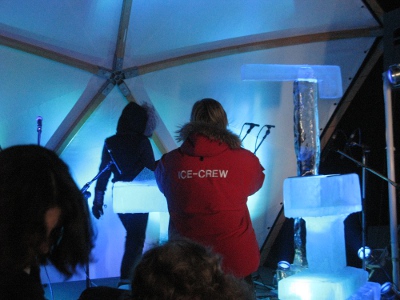
For this reason, and because photography was forbidden during the actual concert, I can’t show you what the instruments actually looked like. They were all percussion except for a large wide-mouthed horn: dangling chimes, a marimba and cylindrical ice hammers used to extract a variety of sounds from ice blocks. Apparently stringed ice instruments have also been played at ice music festivals in Norway and Italy, but none were in evidence at the show I attended. Most of these made the kinds of sounds that you might expect: ethereal, fragile and pure – at least once they had been amplified using what looked like highly directional microphones. But there was one big surprise: an ice block with a thin flap carved out of one side to make a resonator that emitted a booming bass that would have made any dubstepper proud.
As to the music, a number of the pieces were based around repeated melodic figures and wordless vocals, inviting obvious comparisons to Philip Glass et al. But there was also a more trip-hoppy number (on which the bass block was put to good effect) complete with sing-song rap – it might not have actually been joik, but it was suitably evocative of the far north. So was much of the concert, in fact, though it was hard to tell if that was because of the ambience, the music or (most likely) the combination of the two. The final piece, which drew on samples from previous performances and the afore-mentioned horn, was more abrasive – on the noisy end of the ambient spectrum, culminating in a inchoate roar – a dramatic climax to an appropriately impermanent musical experience.
Here’s a short documentary clip about the making of the instruments and the music – mostly not in English, but it doesn’t really matter. There’s also an interview with Insungset on Radio 4’s Today programme here.
Icemusicfestival 2010 from Icemusic on Vimeo.
sumitsays: Don’t understand people who like getting their hair cut. I bet they enjoy zorbing too
sumitsays: Don’t understand people who like getting their hair cut. I bet they enjoy zorbing too
sumitsays: Oh look, the sun’s out NOW
sumitsays: Oh look, the sun’s out NOW
sumitsays: ECLIPSE IS AWESOME YOU GUYS SUN IS ALMOST TOTALLY OBSCURED oh, right, never mind
sumitsays: ECLIPSE IS AWESOME YOU GUYS SUN IS ALMOST TOTALLY OBSCURED oh, right, never mind




